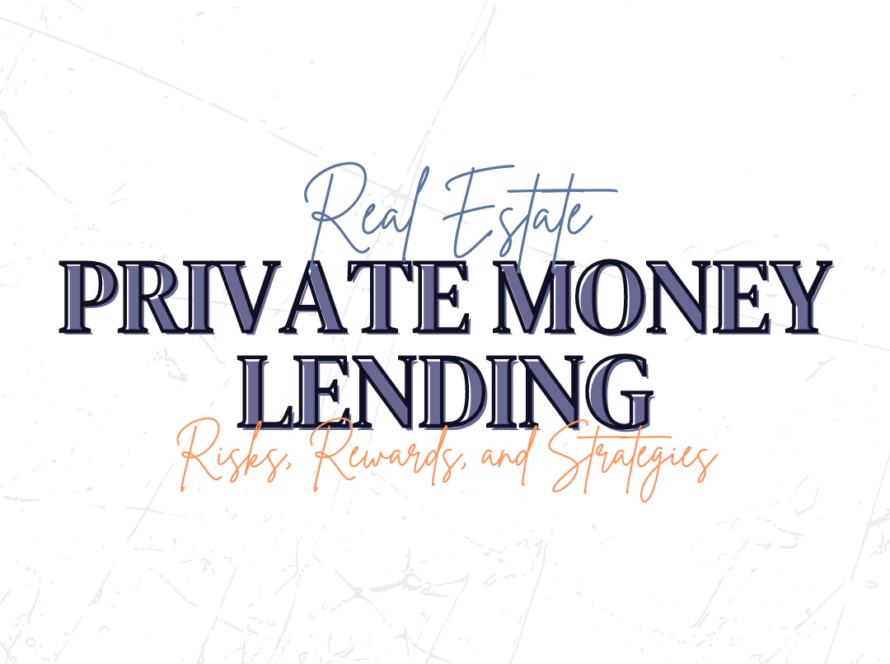a Private Lender in Real Estate
Real estate investing has always been a proven path to wealth, but it often comes with challenges like managing properties, dealing with tenants, and handling maintenance headaches. What if you could invest in real estate without ever owning a property and still earn significant, predictable returns?
This is where private real estate lending comes in. By acting as “the bank,” you provide short-term loans to real estate investors and earn interest on those loans, all while avoiding the stress of ownership. Whether you’re looking to create passive income, diversify your investments, or simply start small, private lending is a powerful strategy to build wealth.
In this step-by-step guide, we’ll walk you through everything you need to know to become a private lender—from understanding the process to identifying opportunities, evaluating deals, and mitigating risks. By the end of this guide, you’ll have a clear roadmap to confidently start your private lending journey and achieve your financial goals.
What Is Private Real Estate Lending?
Private real estate lending is a form of investing where you provide funds to real estate investors—such as house flippers or landlords—in exchange for interest payments. The loan is typically secured by the property itself, which serves as collateral.
Unlike traditional real estate investing, you don’t own the property or take on the responsibilities of property management. Instead, you act as a lender, similar to how banks provide mortgages. The borrower uses your funds to complete their real estate project and repays you with interest, creating a passive income stream for you.
For example, if you lend $50,000 to a real estate investor for a 12-month house flip at a 10% interest rate, you’ll earn $5,000 in interest. Once the project is complete and the borrower sells or refinances the property, they pay you back the original loan amount.
The beauty of private lending is its simplicity: your role is to fund deals, assess risks, and collect returns. It’s a streamlined way to participate in real estate without the complexities of ownership.
The Mindset Shift: Becoming the Bank
To succeed as a private lender, you need to shift your mindset from traditional real estate investor to “the bank.” This means focusing on creating systems, protecting your capital, and thinking strategically about every deal.
Here’s what this shift looks like:
- Passive Income Focus: Your goal is to generate steady interest payments without hands-on involvement.
- Capital Protection: Unlike owning a property, where unexpected expenses can eat into profits, private lending prioritizes security through collateral and loan-to-value (LTV) ratios.
- Deal Assessment: Just like a bank, you must evaluate each borrower and deal carefully, ensuring it meets your risk tolerance and return goals.
Imagine yourself as a mini-bank that funds small, manageable real estate projects. The borrower handles the heavy lifting—renovations, tenant issues, or property sales—while you collect interest as agreed.
This mindset shift allows you to scale your investments efficiently, diversify across multiple deals, and grow your wealth faster than through property ownership alone.
Steps to Becoming a Private Lender
Here’s a step-by-step roadmap to start your private lending journey:
Step 1: Educate Yourself
Before diving in, it’s essential to understand the fundamentals of real estate, private lending, and loan structuring. Tools like The MicroBanking Method provide comprehensive training on:
- Evaluating property values.
- Analyzing borrower credibility.
- Understanding loan terms and legal protections.
Having this foundation will give you the confidence to assess opportunities and avoid costly mistakes.
Step 2: Build Your Network
Find borrowers who need funding for real estate projects. Networking is key—connect with local real estate investors, attend meetups, and join online communities. Platforms like BiggerPockets and real estate investor groups are excellent places to start.
Pro Tip: Vet borrowers thoroughly. Ask for their track record, past projects, and creditworthiness. Experienced borrowers with a proven history reduce your risk.
Step 3: Identify Profitable Opportunities
Not all deals are created equal. Use these criteria to evaluate lending opportunities:
- Loan-to-Value (LTV) Ratio: Keep LTV under 70%. For example, on a property worth $100,000, your loan shouldn’t exceed $70,000.
- Project Viability: Is the borrower’s plan realistic? Will the property sell or refinance on time?
- Borrower Experience: First-time investors may pose higher risk than seasoned pros.
Step 4: Structure the Loan
Once you find a deal, it’s time to structure the loan:
- Set clear terms: interest rate, repayment schedule, and loan duration. Short-term loans (6–12 months) are common in real estate flipping.
- Use a secured loan agreement: Work with a real estate attorney to draft a contract protecting your interests.
Example: If you lend $80,000 on a 12-month loan at 12% interest, the borrower will pay you $9,600 in interest over the year ($80,000 x 12%).
Step 5: Secure the Loan With Collateral
Always secure your loan with the property as collateral. This gives you a legal claim to the asset if the borrower defaults. Work with an attorney or title company to ensure the loan is properly recorded.
Step 6: Monitor the Deal
Stay in touch with the borrower throughout the project. Regular updates on the property’s progress will ensure everything stays on track.
Step 7: Collect Your Returns
Once the project is complete, the borrower repays your loan, including interest. At this point, you can either reinvest the funds into a new deal or use the profits to achieve other financial goals.
Mitigating Risks in Private Lending
While private lending is a low-risk investment strategy, it’s crucial to take precautions:
- Thorough Due Diligence: Vet borrowers carefully and analyze the deal’s viability. Request details like:
- Property value (use appraisals).
- Borrower’s financial history.
- The project timeline and exit strategy.
- Low Loan-to-Value (LTV): A lower LTV ratio reduces risk. For example, lending $70,000 on a $100,000 property provides a cushion if the borrower defaults.
- Legal Protection: Use a secured loan agreement drafted by an attorney to ensure your investment is protected.
- Regular Communication: Stay connected with the borrower to monitor progress and resolve issues early.
By following these strategies, you can minimize risks and ensure profitable, safe lending deals.
Conclusion
Becoming a private lender in real estate is a smart, scalable way to build wealth without the responsibilities of property ownership. By acting as “the bank,” you earn passive income through secured loans while borrowers handle the hard work of property management.
Through steps like education, deal evaluation, and risk management, you can confidently navigate the private lending process. Tools like The MicroBanking Method simplify this journey, offering the training and resources you need to succeed.
Whether you’re a beginner looking to start small or an experienced investor seeking diversification, private lending is a proven strategy for achieving financial freedom.Ready to get started? Explore The MicroBanking Method to learn how to become a successful private lender and take the first step toward passive income and long-term wealth.



